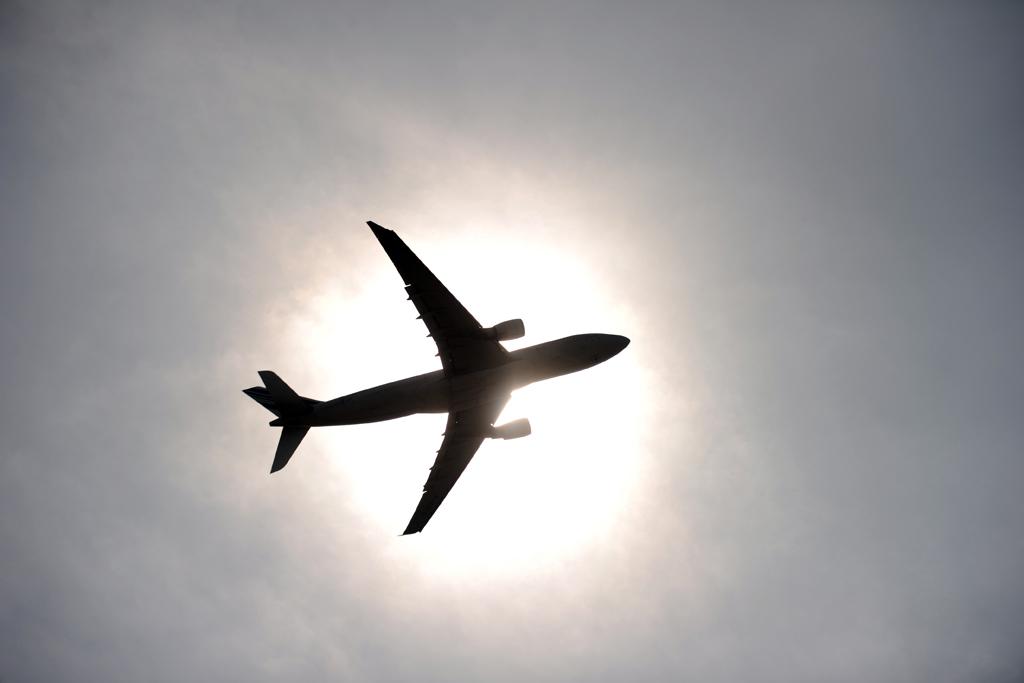Why is Zimbabwe’s national airline called Scare Zimbabwe?
An airplane takes off.
HARARE, Zimbabwe — Passengers wanting to travel by Air Zimbabwe from the capital Harare to the country’s second city, Bulawayo, have found themselves transported by bus. The journey that usually takes 45 minutes by air can take up to five hours by road.
It is testimony to the perilous condition of Zimbabwe's national flag carrier that passengers are being bumped off scheduled flights and put aboard a bus for the 275-mile journey to Bulawayo. Business people are fuming that it is impossible to arrange meetings when there is no prospect of arriving on time.
”By the time we get there, it’s time to come back,” one prominent Bulawayo businessman said. Air Zimbabwe used to run a profitable commuter route so that business people could fly from one city to the other in the morning and return in the evening. No longer.
Air Zimbabwe has been on the ropes for much of this year, hit first by a pilots’ strike and then by fuel shortages.
But the airline’s problems have a deeper malaise. They are emblematic of a state-owned company that has, over a 30-year period, been the plaything of politicians. The first post-independence minister of transport, Herbert Ushewokunze, personally designed the airline’s livery. And his successors routinely give instructions to general managers over the phone.
Most damaging of all, President Robert Mugabe diverts scheduled flights to use planes for his frequent trips overseas, causing considerable inconvenience to passengers.
An editor and two journalists were locked up in 2004 for daring to report that Mugabe had commandeered a plane to take him on a trip to the Far East. His minister of information objected to the word “commandeered.” Mugabe has been to Singapore four times this year, mostly for health reasons, flying Air Zimbabwe.
Bad business decisions have added to the airline's woes. Routes to China have been introduced while the busy and lucrative London route has been starved of flights.
Air Zimbabwe has two Boeing 767-200s used on the China and London routes and two Boeing 737s used on the Johannesburg route. Three Chinese planes sit forlornly on the tarmac at Harare airport. Because they are so often out of service, they are universally known by Zimbabweans as “Zhing Zhongs,” the derisive term Zimbabweans use for cheap imported Chinese goods that don’t last very long. A third plane of the same model is cannibalized for parts. The Chinese planes are the product of a political deal with Beijing.
The Chinese planes' record of breakdowns have prompted wags to call the airline "Scare Zimbabwe." So far, however, the airline has not had any serious crashes.
It was not always like this. At Zimbabwe's independence in 1980 Air Zimbabwe had more than 15 planes. Its regional network was unambitious but profitable.
Today the airline wallows in a debt of $100 million.
Board chair Jonathan Kadzura defended the decision to bus passengers from Harare to Bulawayo saying each flight must have enough passengers to make the trip profitable.
“There is no way I can authorize the 767-200 from Harare to Bulawayo with only 30 passengers,” said Kadzura. “I am not like a stupid bus operator. Who can authorize a bus to drive from Mutare (Zimbabwe’s eastern city) to Harare with one passenger?”
But Kadzura did authorize a flight to Johannesburg with only 13 passengers on board last month. Despite the decision to only allow the Harare to Bulawayo fight to fly if it has enough passengers, there are international routes that are flown for political reasons without adequate traffic. The airline once flew a single passenger from Dubai to Harare.
When not diverting passengers to bus routes, Kadzura pens puff pieces in the government media praising Mugabe and the president's ruling Zanu-PF party.
Aviation observers unfavorably compare Air Zimbabwe to Kenya Airways. The Kenyan airline is a success story largely because it works in partnership with KLM. Today Kenya Airways is the busiest and most profitable African airline with Nairobi as its hub. Its planes fly to West Africa, Europe, America and the Far East.
“The Air Zimbabwe story fully explains how this country has been run down by greedy and selfish individuals,” a local paper, the Daily News, said recently.
It is a view shared by the nation at large. There is a growing demand that costly and badly managed state corporations should be privatized quickly.
But Mugabe’s regime argues that “strategic” companies like Air Zimbabwe need to be kept out of the hands of Western owners. But it is the Zimbabwean taxpayer who must pick up the tab if Robert Mugabe decides to make a fifth journey to the Far East later this year.
